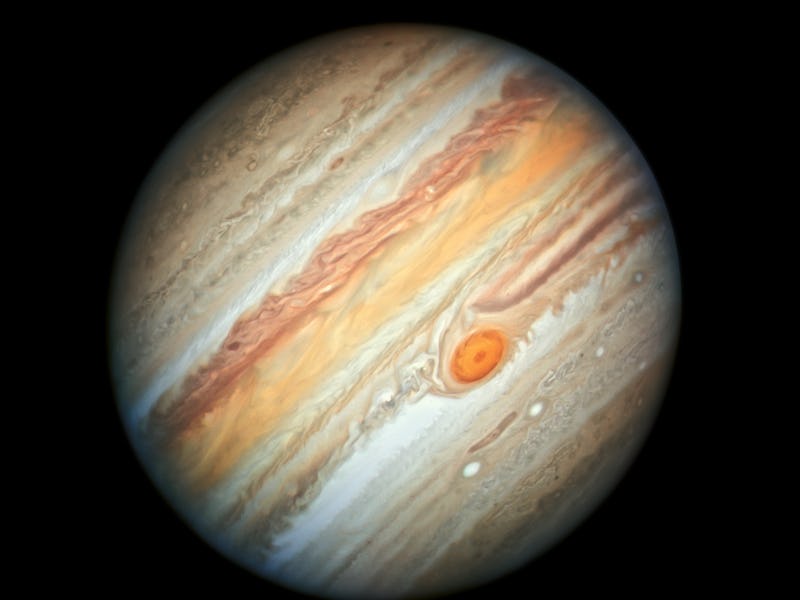Study defies claims that Jupiter's Great Red Spot may be dying
This storm is thick.

Jupiter’s atmosphere rages with violent storms, the largest of which has been swirling with winds and layers of gas for more than 100 years: The Great Red Spot.
Twice as wide as Earth, this storm is legend among astronomers. And despite recent claims suggesting it is shrinking all over, it is just as thick as ever, scientists report.
In a new study published Monday in the journal Nature Physics, scientists reveal just how thick this storm gets for the first time.
The study determined that the Great Red Spot is around 105 miles (170 kilometers) thick. That is more than twice the thickness of the largest hurricanes on Earth, according to NASA.
The results are remarkably consistent with observations made by the Voyager mission in 1979 of the storm, revealing that its thickness hasn’t changed in more than 40 years. They also defy recent recent claims suggesting that the Great Red Spot is shrinking. Rather, it may be just as strong as ever.
A mini Great Red Spot
Despite being such an object of fascination, this 400 mile-per-hour anticyclone remains largely a mystery to scientists. (A category four hurricane on Earth has winds reaching up to 150 mph, by comparison).
“It’s an object that we do not understand that evolves in this planet’s atmosphere,” Daphné Lemasquerier, a researcher at Aix-Marseille Université in France, and lead author of the study, tells Inverse. “We do not understand a lot of their features. Why do they have this size? What is the physics behind these vortices?”
Part of the reason why scientists don't know a lot about the Great Red Spot is because it is difficult to study directly — Jupiter's atmosphere is too volatile for any of our spacecraft to get a close-enough look.
A snapshot of the recreated storms in the lab.
So to get around this, the researchers instead made miniature versions of Jupiter's wild storms in the confines of the lab.
They applied some key features of the storms, such as their shape, rotation, and retention of the planet, to a 20 inches by 20 inches by 28 inches plexi-glass tank filled with salt water.
“We artificially created the vortex inside the water,” Lemasquerier says. “And we followed the evolution of the shape of the vortex.”
Down with death rumors
Since it was first discovered, scientists have noticed that the Great Red Spot appears to be shrinking in size.
In the late 1880’s, the Great Red Spot measured as wide as 35,000 miles, or around four times the diameter of Earth. But by the time the Voyager spacecraft made it to Jupiter a century later, the storm appeared to be about twice the width of Earth.
The rumors that the Spot was shrinking away were stoked in May, 2019, when an amateur astronomer spotted something unusual about the Great Red Spot.
A blade-like shape seemed to be flaking off from the vortex, leading some to believe that the Solar System’s largest storm would soon disintegrate into nothingness.
But, the new findings suggest this most beloved of tempest's future is bright.
Into the eye of the storm
To confirm these lab-bound findings, the researchers now need to compare their theoretical data with direct measurements of Jupiter's storms. And that is where NASA's Juno mission comes in.
The Juno mission launched in 2011, and, since July 2016, this hardy craft has orbited Jupiter every 53 days, observing the planet’s atmosphere from above.
But to get a closer look at Jovian storms is no easy feat. Jupiter’s clouds are in the way of any clear observations of its lower atmosphere.
But the spacecraft does have the ability to peer deep into Jupiter’s atmosphere, looking beyond its thick clouds with its various instruments, and taking measurements at multiple depths simultaneously. These data could help confirm the new findings, the researchers say, even if indirectly.